Renovating your kitchen? Here are 2022’s cabinet trends
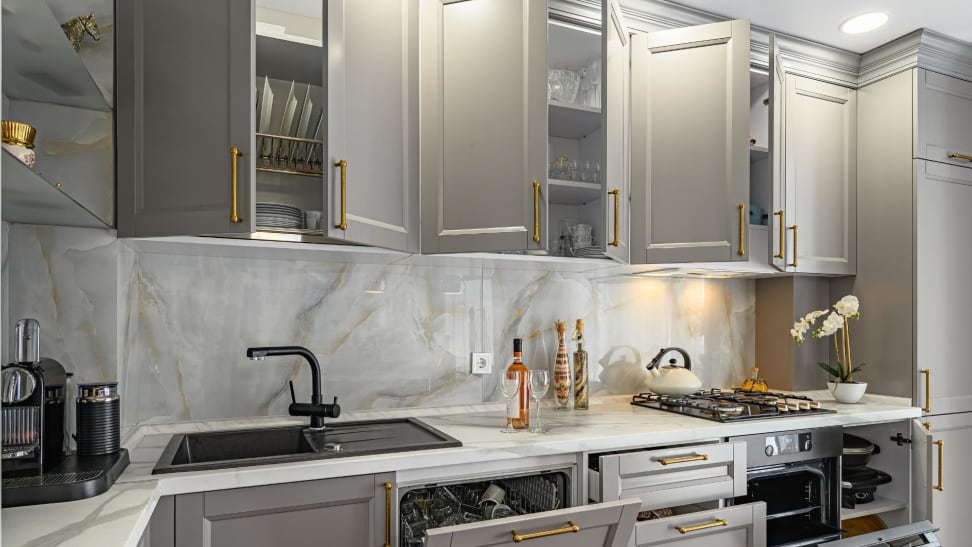 — Recommendations are independently chosen by Reviewed’s editors. Purchases you make through our links may earn us a commission.
— Recommendations are independently chosen by Reviewed’s editors. Purchases you make through our links may earn us a commission.The kitchen is undoubtedly the heart of most homes; and, with the pandemic prompting more cooking and congregating to occur in this functional and centralized area, new constructions and updates are on the rise.
In fact, the 2022 U.S. Houzz Kitchen Trends Study, released in January, found in its survey of 2,380 U.S. homeowners that the median expenditure for both major and minor kitchen remodels increased in mid-2021 by 14% to $40,000 and by 25% to $10,000, compared to the previous year.
Since the top cost of a kitchen update or remodel is generally the cabinets—by 29% of the overall cost, according to the National Kitchen and Bath Association—what’s novel and necessary takes priority.
“Homeowners are no longer satisfied with cookie-cutter kitchen designs,” says Bryan Sebring of Sebring Design Build, in Naperville, Illinois.
Sebring designs cabinets based on client specifications and then installs them. “They want something unique that builds [the home’s] character and personality or provides a bold statement.”
While interior construction trends are often influenced by home furnishings and décor trends, 2022 dictates that distinction overrides cookie-cutter. Much regarding cabinetry choices involves specific style preferences and needs.
Open shelving or closed cabinetry? That is the question
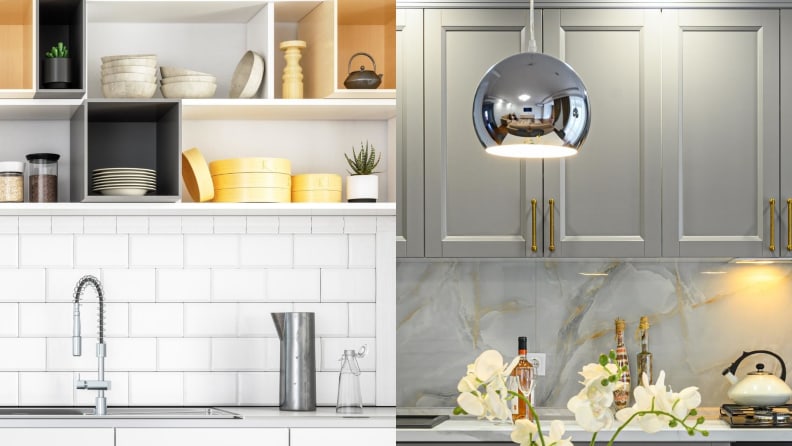
Open shelves provide easy reach and visibility to your condiments and kitchenware, while closed cabinets may provide some protection.
Whether traditional cabinetry or open shelving is best is entirely based on preference. Closed-door cabinetry keeps everything tidy and out of sight, but then a consideration for open shelves is that they help provide a wider feel to tighter kitchen spaces and give the illusion of more square footage. Plus, everyday items are within reach.
Open shelves are “efficient, since you can see and grab what you need without taking the time to open cabinet doors to look inside,” notes Sebring.
In addition, since china cabinets are no longer popular, open shelves act as display space for treasured china pieces, pottery collections, and distinct glassware.
Even though open or closed are the two main kitchen shelving possibilities, Kate Farr, a designer with the Design Galleria Kitchen and Bath Studio in Atlanta, GA says she will “introduce an additional texture or material to elevate the space into something truly special for the client.”
She says, “Adding metal, glass, leather, or mesh to the center panels of cabinetry doors introduces a custom spin on the concept of classic cabinetry. Changing the material that open shelving is constructed from also will introduce an unexpected element into your new space.”
Look for color on your cabinets, in unexpected ways
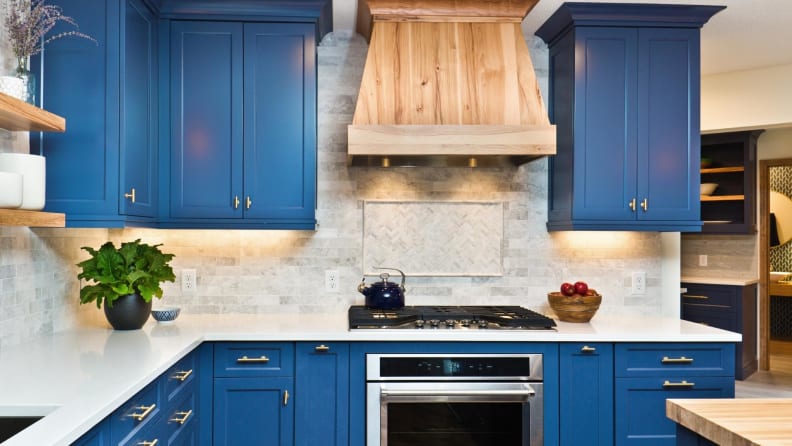
Liven up your kitchen with new colors!
While a white kitchen may be a classic that never goes out of style, haute hues are harnessing the market when it comes to today’s cabinets.
Sebring points out, “Color is one of the most effective ways to take notice. A different color of paint on your cabinets can make all the difference and separate [your kitchen] from the pack."
Besides just one painted cabinet color throughout, two-tone cabinets—or one color of cabinets in one area and another in another area—are showing up in kitchens, as well.
Another term for introducing more than one color in a kitchen is color blocking. For example, a darker color might be chosen for the low cabinets and a lighter color for the higher cabinets; or, two variations of a color are featured on separate sides of a room.
Becoming especially common is one color on all the cabinets except the island cabinetry, which is adorned with its own stand-out color.
Shades of greens and blues, from subtle to rich and saturated, are currently popular. Farr says, “Cool tones win out over warm tones! There is no question at all that cabinetry, stone, and hardware selections lean away from the yellow, orange, and red tones and more towards the gray, blue, and green color range.”
Sherwin Williams’ color of the year, pegged as a natural neutral called Evergreen Fog SW 9130, and the Benjamin Moore choice, a pale sage hue dubbed October Mist 1495, are expected to fit the bill for new and renovated kitchens. These green tones are a transition from the varying grays prevalent during the past several years. Grays have not completely exited kitchens, in terms of wall and cabinet paint color choices, but they are being overlooked by other, more nature-inspired colors.
Sebring cites that green-tone paints, oak wood, and neutral finishes mix beautifully.
Custom paint jobs offer higher quality than DIY
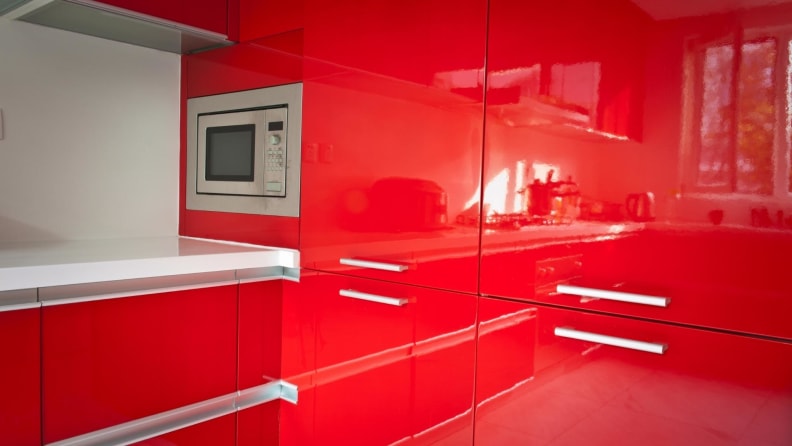
The colors from factory-made cabinets can be more durable.
Atlanta, GA designer Shirlene Brooks recently completed an extensive renovation and add-on to her Appalachian Mountains’ home, and she veered away from a traditional, exposed woodgrain look on her cabinets, instead embracing a sleek, velvet-black finish on clean-lined custom cabinets.
So, what is the difference in painting wood cabinets versus ordering cabinets already painted?
Sebring says, “By ordering painted cabinets from a factory, the quality is higher, and the finish is more durable. When you paint cabinets in a house, typically companies use a lacquer finish, because it has a quicker dry time. Lacquer can break down when it comes in contact with oils from skin. Our cabinet company uses two coats of conversion varnish, which is a much more durable finish compared to a lacquer finish.”
Unpainted wood continues to appeal
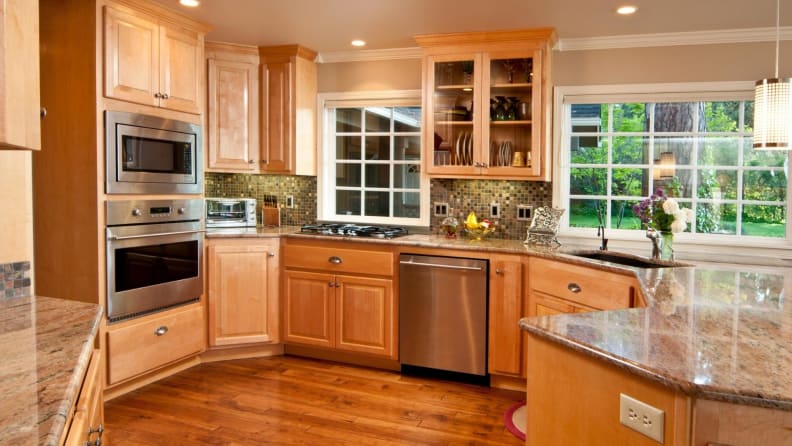
Nothing wrong with keeping things looking traditional!
Still, unpainted wood will always appeal. Even though, as Sebring explains, overused red oak fizzled for a while as the preferred cabinet wood. “White oak has become very popular over the last year or two due to the way it takes stain, as well as the more linear graining it offers.”
Indeed, oak cabinetry is versatile and able to present such styles as seaside or French cottage, old-world or rustic, or modern and simplistic. “The taupe color tones of white oak are a very different look then red oak,” adds Sebring.
New cabinetry considers contemporary storage needs
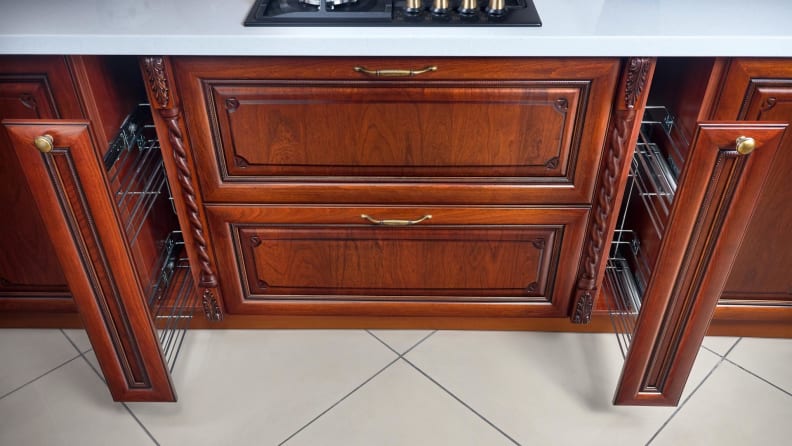
Now you can store more things!
Cabinetry storage needs have changed to suit not only technology’s impact, but also new appliance and kitchen-gadget trends and an increased interest in at-home cooking.
Some distinct storage options being built into cabinets include tray dividers, spice pullouts, and drawer dividers, according to Sebring, who also says that clients are increasingly asking for outlets for charging phones and iPads.
Jasper, Indiana-based Omega Cabinetry has found that more of its clients want customizable storage to address the home’s individualized needs. For instance, more drawers and deeper drawers.
Another distinction is to install cabinets that reach all the way to the ceiling to maximize storage opportunities. The tops of cabinets typically just gather dust, and to make those areas aesthetically pleasing, homeowners often feel compelled to decorate the space with something.
To-the-ceiling cabinetry solves this dilemma. And, even though a step stool or ladder may be required to reach high shelves, additional storage versus wasted space is considered a win for many people—especially those with numerous appliances, dishware, and more.
Cabinet hardware lends personality
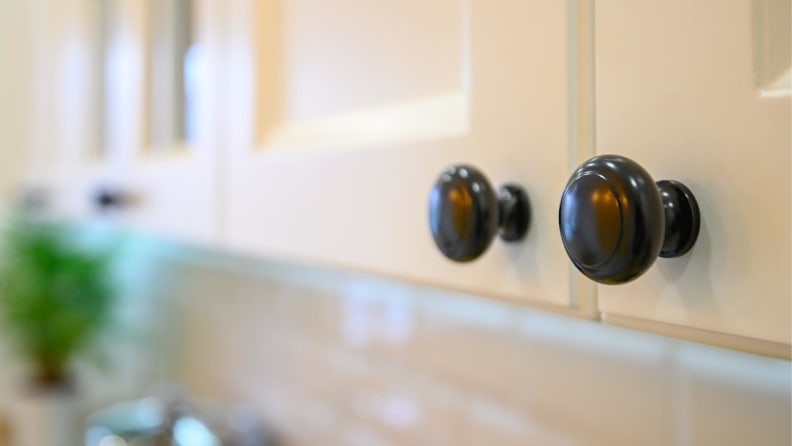
Whether it's a knob or a handle, cabinet hardware really does complement the look of the kitchen.
“Hardware is a great place to tie in existing design elements into a new space in the home,” says Farr.
And, while cabinetry hardware also experiences trend cycles (currently, matte black and brass garner attention), there are no hard and fast rules.
Solid brass hardware with an antique finish dresses maple cabinetry painted a soft neutral beige in self-taught Columbia, SC decorator Jenni Wilson’s renovated 1920s cottage kitchen, which includes this look because “it complements the home’s traditional style, but it is also stunning and timeless.”
Farr adds, “The biggest trend that we are currently seeing in hardware right now are knobs and pulls coming in two-tone or two-texture combinations. Color and finish selections of hardware are specific to the feel and design aesthetic of the space, but I encourage clients to look for a coordinating color to the architectural hardware in the home as a whole and then introduce a new element with metal or texture.”
Sebring says, “The only rule we use with cabinet hardware is the 33% rule. The width of the hardware shouldn’t exceed 33% of the cabinet width. Besides that, there really aren’t rules when it comes to hardware. We choose hardware based on the style of the project we are working on. Hardware is the jewelry of a kitchen and can make or break a space. We do prefer to use oversized hardware instead of small.”
One caveat to kitchen hardware: To achieve a contemporary look, some cabinets are designed with a touch-opening mechanism. No hardware needed.
Pair an heirloom piece with your cabinetry
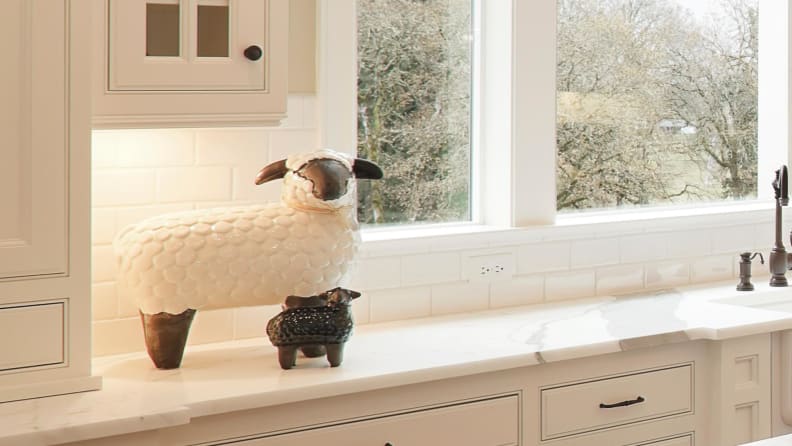
A perfect spot for your ceramic lamb!
A few freestanding furniture pieces mixed in with cabinetry is the finished look many homeowners desire. This is a way to incorporate family heirlooms or antique pantries, baking cabinets, high boys, and buffets into an updated or new kitchen design.
Depending on the intended kitchen style, these pieces can be painted or finished to coordinate with cabinetry—or become the kitchen setting’s focal point.
The product experts at Reviewed have all your shopping needs covered. Follow Reviewed on Facebook, Twitter, and Instagram for the latest deals, product reviews, and more.
Prices were accurate at the time this article was published but may change over time.
